Design that Connects
Sky UI is the design system powering one of the UK’s largest entertainment and connectivity brands.
I led its evolution to unify Sky’s digital products under a single, scalable system — improving consistency, speeding up delivery, and embedding accessibility at scale.
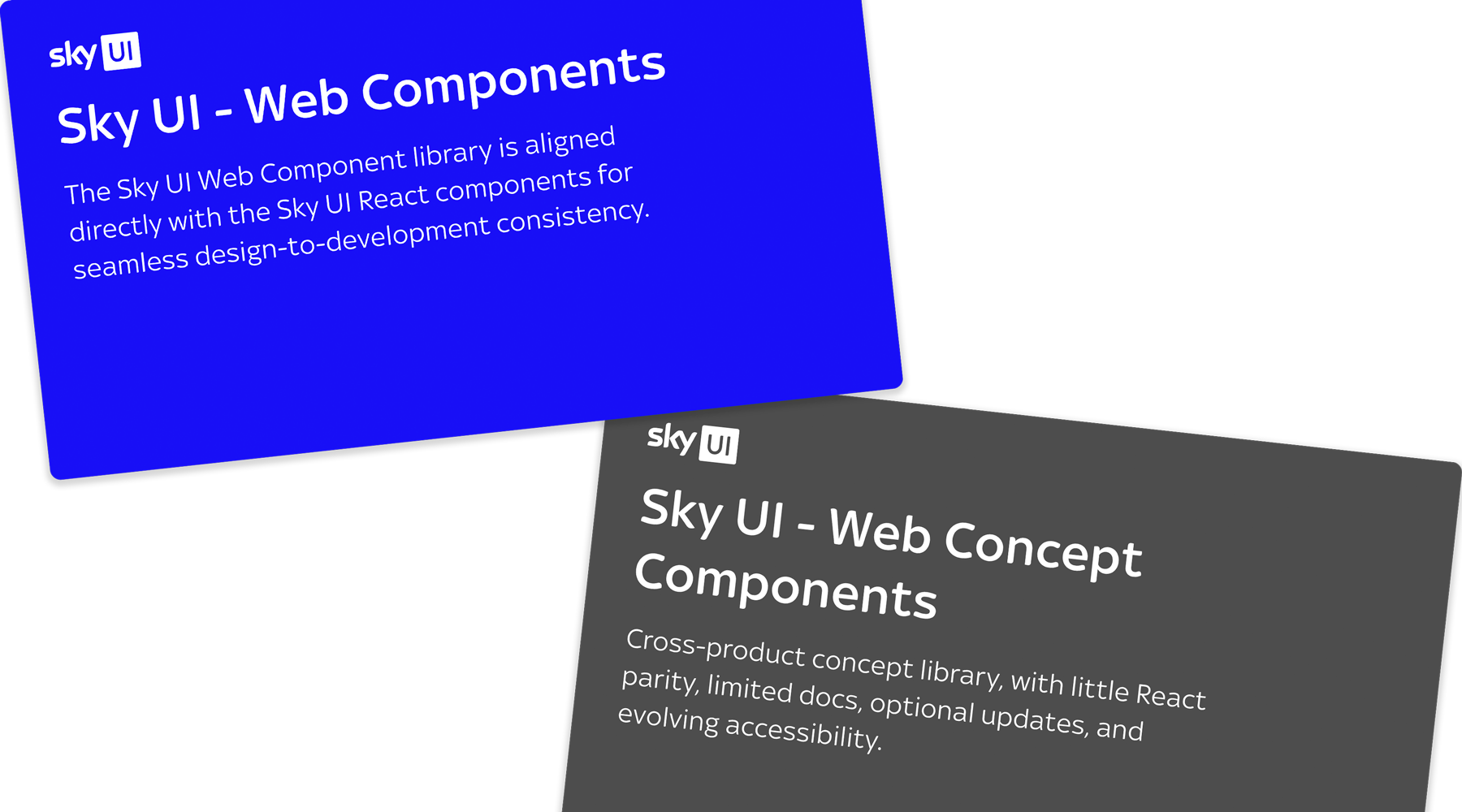
Setting the vision
When I joined the Sky design system team, each product had its own interpretation of brand and interaction patterns. This inconsistency led to duplicated work, design debt, and slow delivery. My mission was to bring everything together under a single, scalable system — one that wouldn’t just unify Sky’s products but raise the quality bar for years to come.
Sky UI is that foundation. More than a shared library of components, it is a strategic framework that powers Sky’s product experience. I guide its evolution to balance consistency with flexibility — allowing product teams to move fast without sacrificing craft.
Briefly the system's principles can be summarised as:
- Consistency – establishing a recognisable, trustworthy interface across Sky’s products.
- Flexibility – enabling teams to adapt patterns without feeling constrained by the system.
- Scalability – designing for today’s needs while laying foundations for future platforms, including Now.
- Accessibility & Inclusivity – ensuring that interfaces are usable, legible and welcoming for all audiences, regardless of ability or context.
Working closely with engineers, I ensure every component behaves as expected across contexts and can adapt to new use cases. This work is now laying the groundwork for Now’s upcoming design system, extending Sky UI’s reach beyond its original purpose.
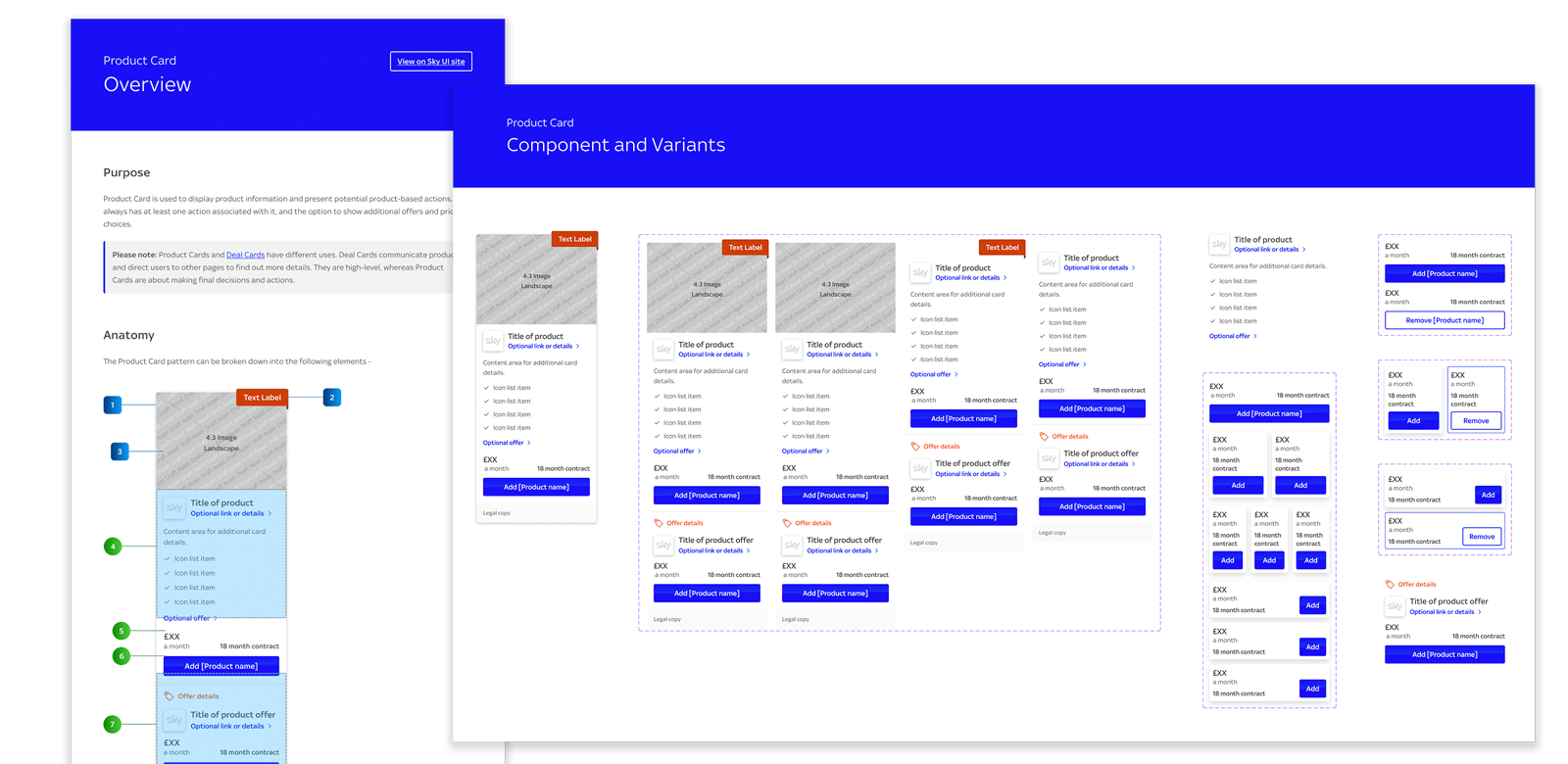
Embedding Accessibility
Accessibility is been a key pillar from the start. I partner with specialists to validate component behaviour, typography and motion principles. Today, accessibility is no longer an afterthought but a built-in outcome of using Sky UI.
Driving Adoption
A system is only as powerful as the teams who use it. To build trust and adoption, I run regular workshops, critiques and update sessions with designers and developers. These sessions encourage contributions back into the library, creating a culture of shared ownership and dramatically reducing fragmentation.
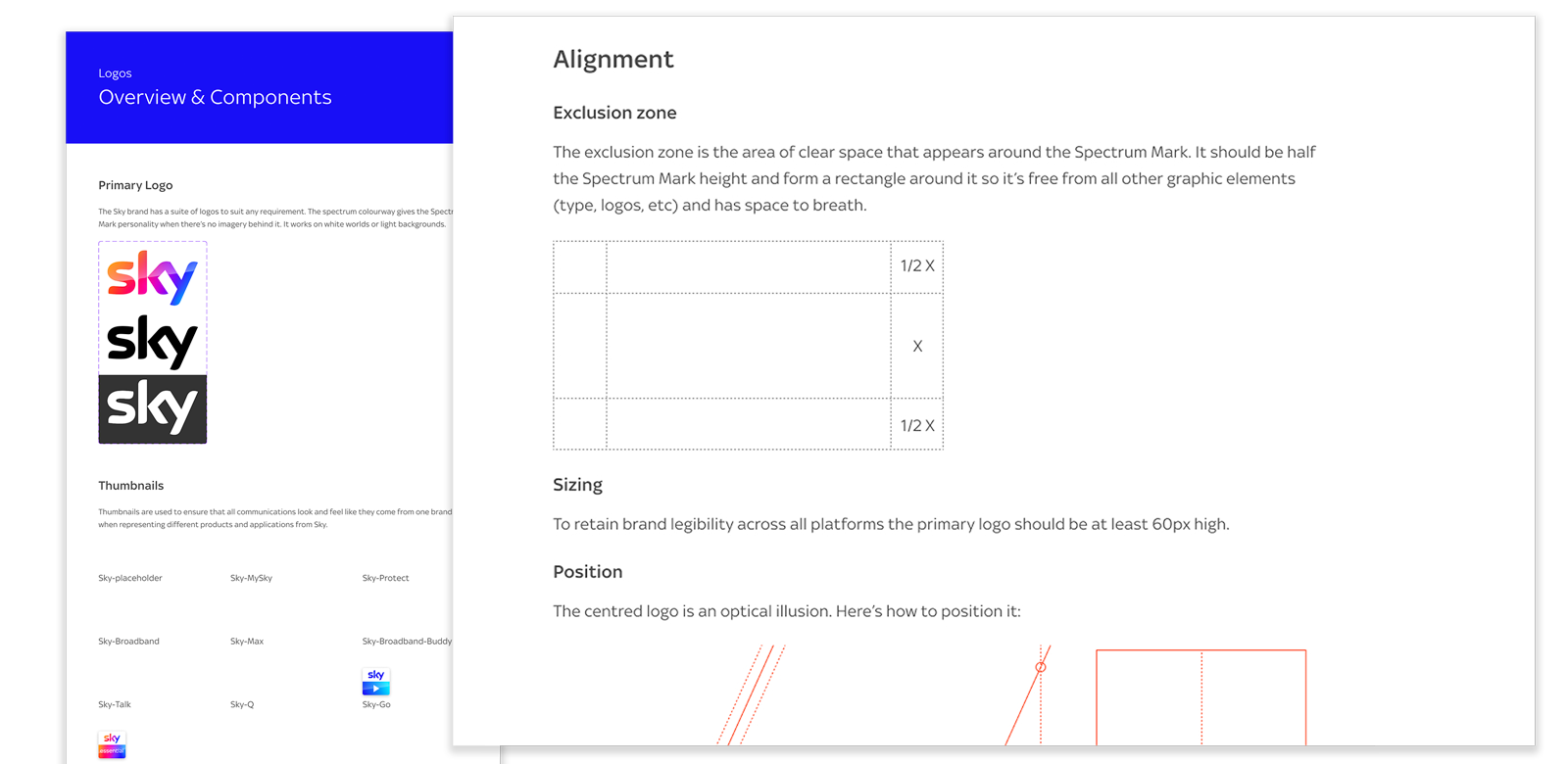
Impact on Delivery
The results are tangible:
- Consistency Product teams now deliver faster with fewer inconsistencies.
- The tokenized system supports rapid theming, letting teams adapt quickly without reinventing patterns.ling constrained by the system.
- Sky UI is now forming the backbone of more complex experiences, from service pages in “My Sky Account” assisted journeys used in retail stores
Working closely with engineers, I ensure every component behaves as expected across contexts and can adapt to new use cases. This work is now laying the groundwork for Now’s upcoming design system, extending Sky UI’s reach beyond its original purpose.
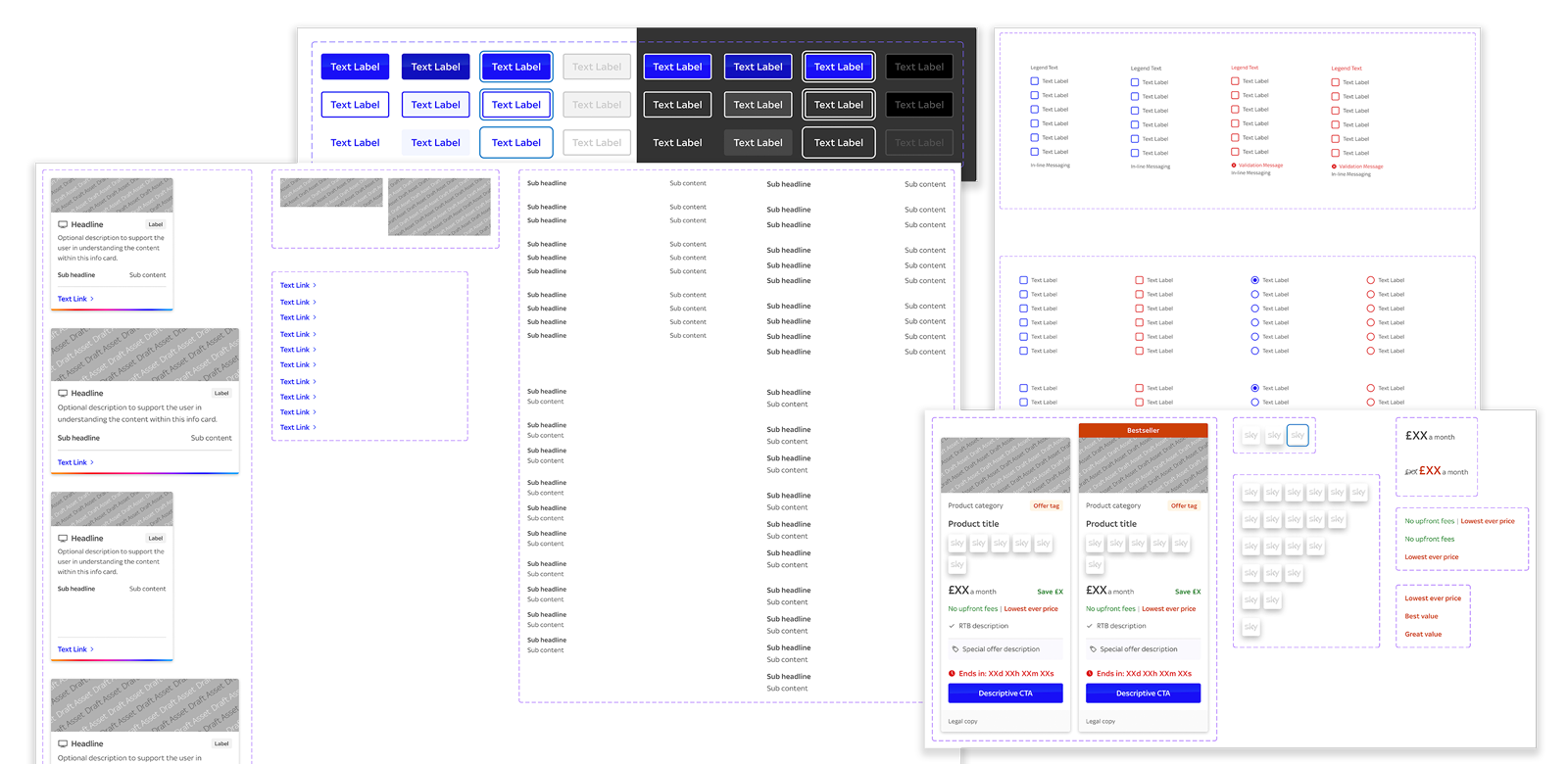
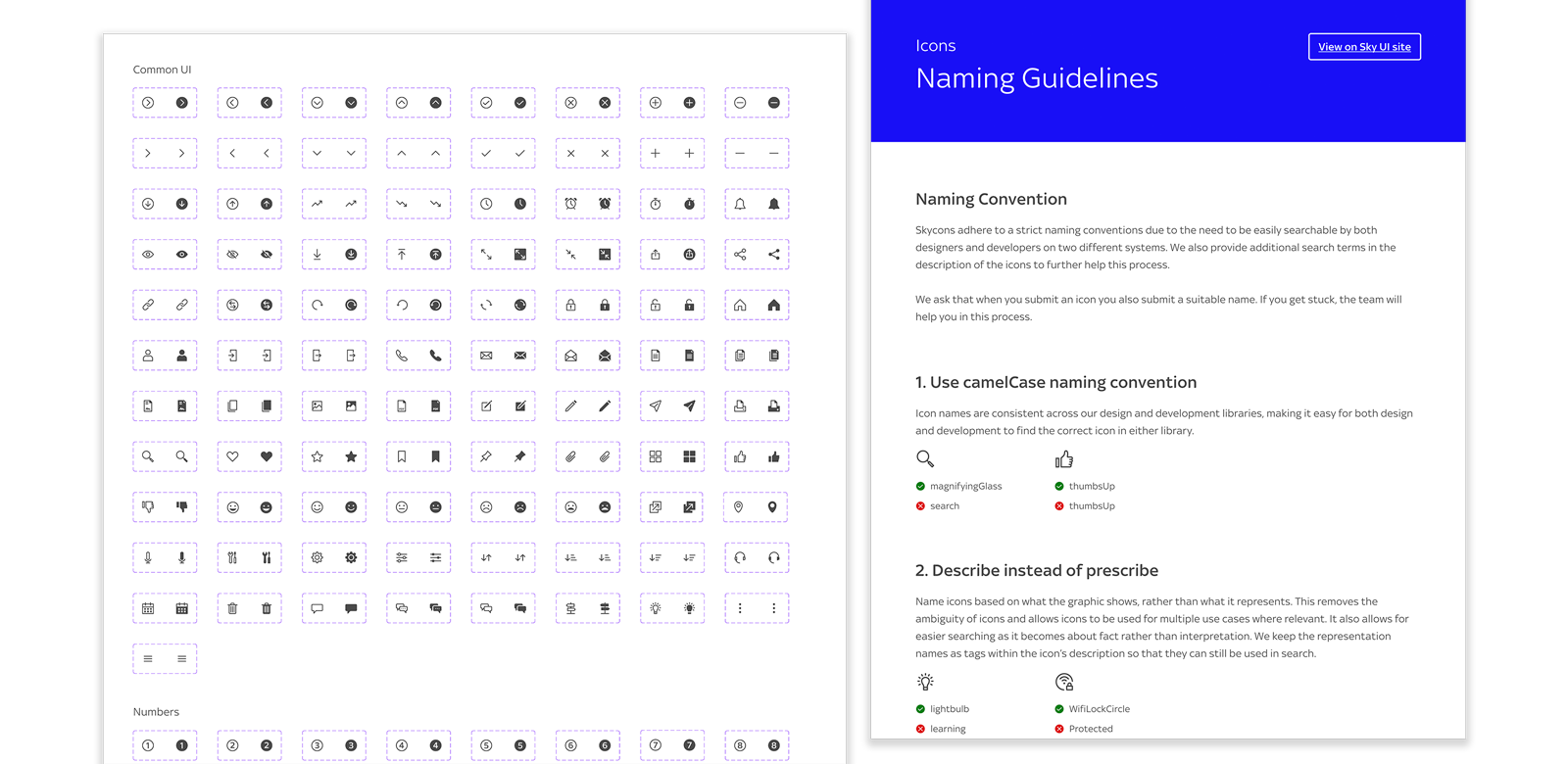
Looking ahead
The next step is improving operational efficiency. My focus is on deeper automation of tokens, tighter integration with engineering pipelines and expanding the system to include advanced components such as data grids and dashboards.
Why it matters
Sky UI demonstrates that design systems are more than craft exercises — they are strategic enablers. By aligning consistency with flexibility, fostering collaboration, and embedding accessibility, I’ve helped create a foundation that supports Sky’s ambitions and transforms the way teams work.ey step in Mr Porter’s early retention strategy.
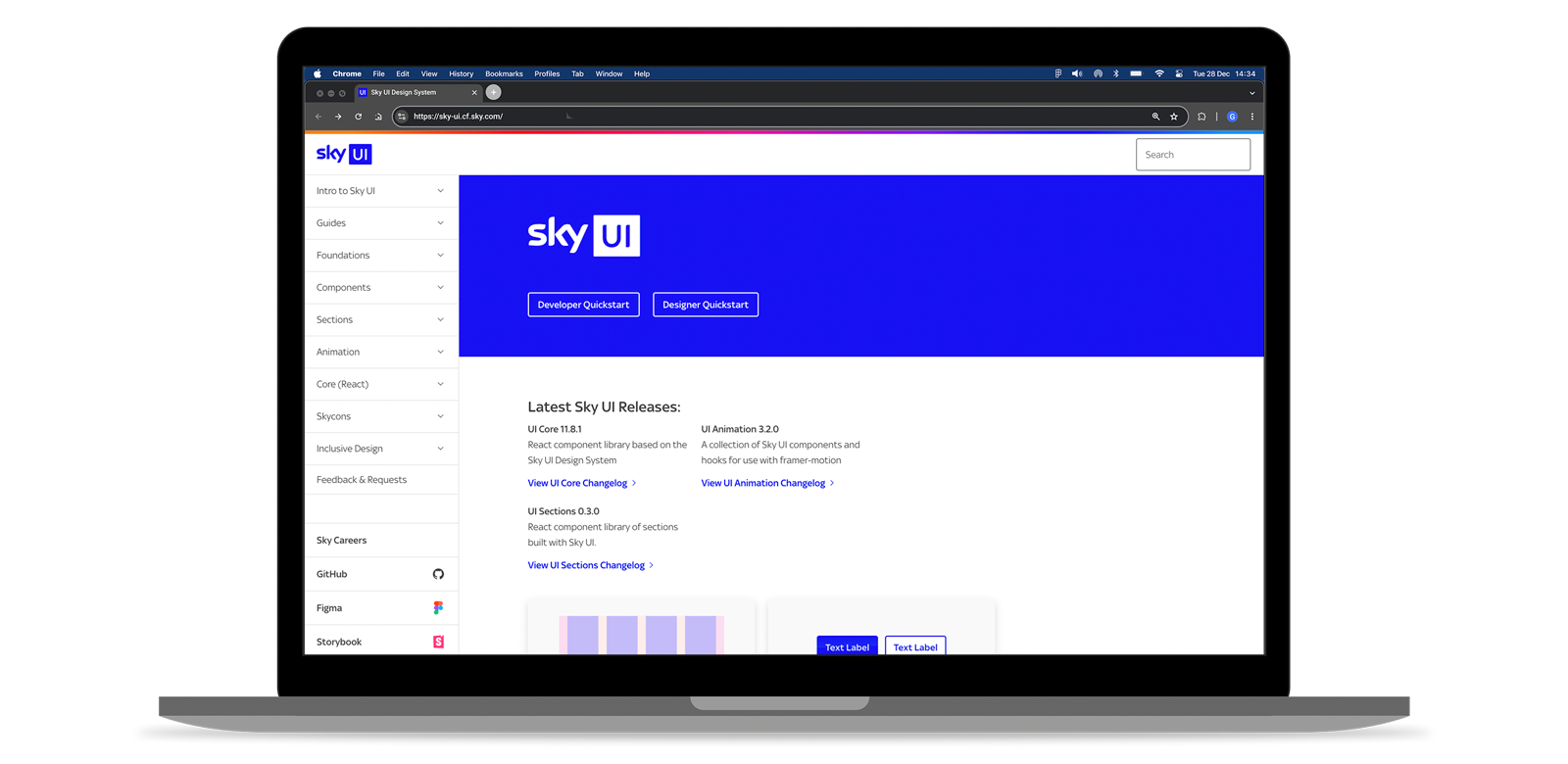
Results
~100%
88%














